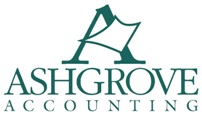Posted by on August 31, 2011
Although this blog post has little to do with accounting, QuickBooks, Peachtree, or financial diagnosis, it has a lot to do with how to run an abundant business; this based on a couple decades of informal (and formal) observing of how entrepreneurs start and run their business.
It struck me a few weeks ago that a business will be managed as either an extension of some desired lifestyle, or as a means to an end. Let me explain the difference with a brief example.
I once knew a very talented (and rich) carpenter. He’s dead now, but how he ran his business continues to inspire me. He would work at least six days a week, he drove around in a rusty, late model station wagon, and had equally tattered clothes. His mantra was to “build it so it’ll last 100 years”. Being thorough at what he did doesn’t seem to describe him well enough. He was never in a hurry about anything, and always made certain his customers were happy. Often he’d engage them in long conversation at the end of a work day, lasting well into the evening. In his 50 years of carpentry he only missed one day of work, and that was because he cut off his finger tip the day before and had to deal with some blood poisoning.
Now contrast this old timer with another contractor I know. He used to install garage doors and openers. When he started his business, he spent more time thinking up a clever business name than he did working out a good business model. He started each day with a “high cholesterol feed” at his favorite diner. When he finally makes it out to the job site, it was often past 9am. He didn’t start any work until his travel mug was filled with coffee and he had put on his expensive work gloves. No point in building up calluses. He used to drive around in a new pickup truck with a fancy ladder rack and beautiful chrome rims. I always found him to be somewhat condescending to his customers, and as you can imagine, he eventually lost his business, blaming it on the recent economic downturn.
Although my example was about contractors, I’ve witnessed the same pattern with jewelry store owners, dentists, chiropractors, and auto mechanics. Most clients I work with happen to fall somewhere in between these two examples. How about you and your business?
My point is that when you start a business, you have a choice to run it as if you’re creating some sort of idealized lifestyle, or you can run it as an operation whose chief purpose is to make you money, thereby giving you the life and freedom you desire. Now I’m not suggesting that you live in poverty for the sake of being self employed. I am suggesting that you consider living well below your means with your business, and then have a goal (read: time and patience) of creating an abundant life for yourself. There is a subtle difference here.
I’ve witnessed too many entrepreneurs start a business and use that as an excuse to “live it up”, all the while getting deeper in debt. Their justification is that they need to dress for success, which extends to office furniture, a nice car and other trappings. Because they didn’t spend enough time developing a decent business model, they really don’t know when they’ll have sufficient business volume to repay all the accumulated debt.
Challenge yourself to run a humble yet remarkable business for 12 months, and let me know how you made out. I’ll be betting that you’re going to be less stressed and more abundant. For those of you already operating with frugality, please comment below about what it’s like.




